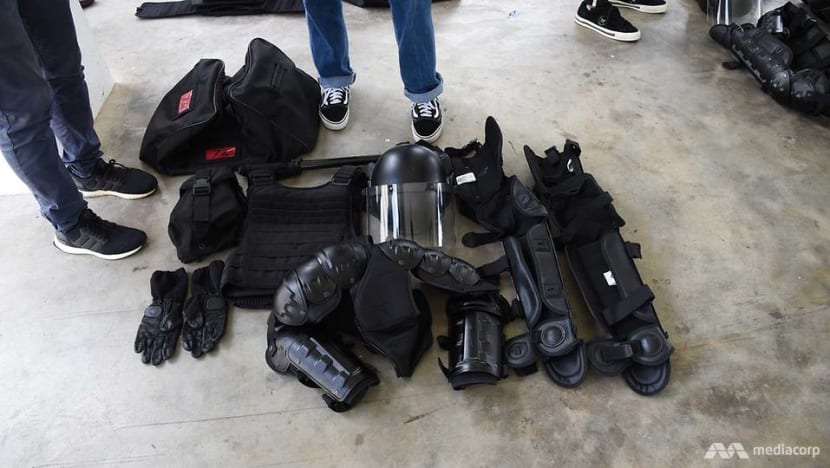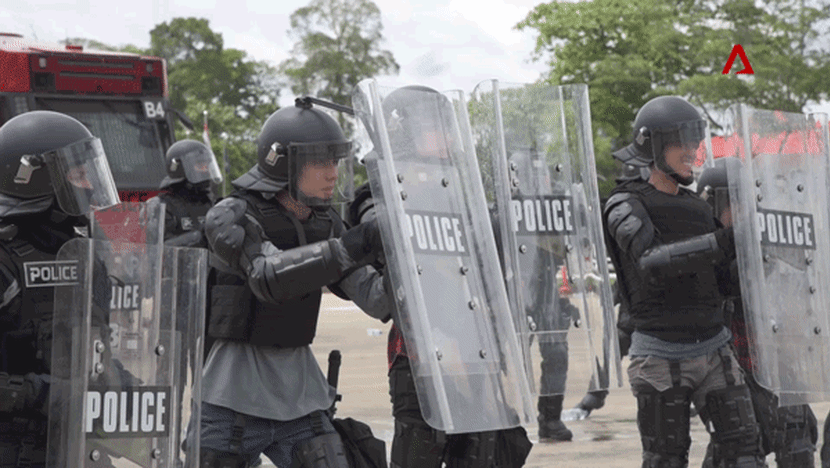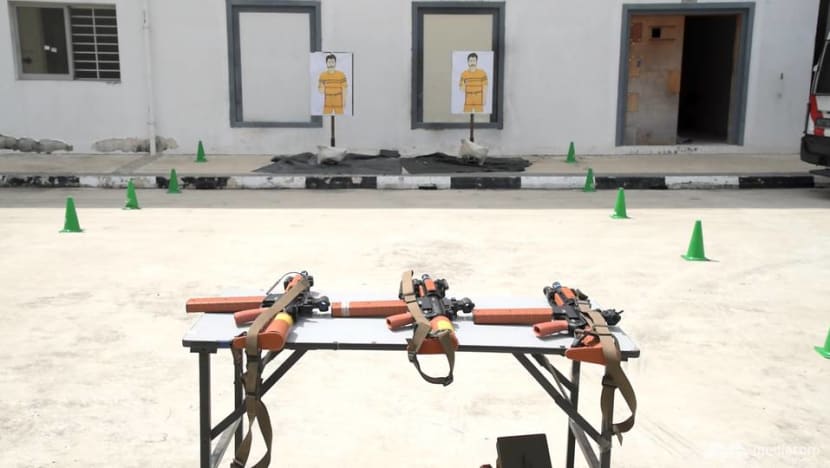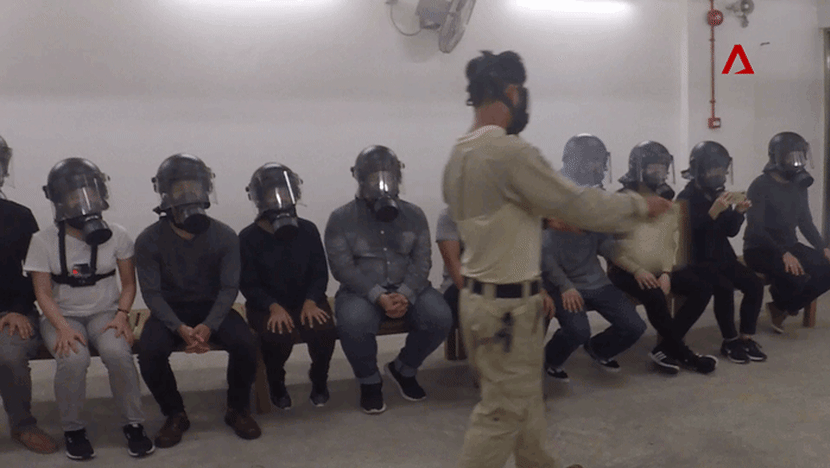The riot squad: How the Police Tactical Unit keeps the peace

In a stimulated riot, as part of the Police Tactical Unit's training. (Photo: Howard Law)
SINGAPORE: As I took off my gas mask, I could feel the tear gas stinging my face, slowly seeping into my eyes and throat. In 15 seconds, the burning in my eyes started to intensify and eventually, I could barely breathe. I hurriedly swung open the heavy doors of the room and gulped in the fresh air as I stumbled out.
This is the kind of intense training that members of the Police Tactical Unit (PTU) go through.
The unit is part of the Singapore Police Force‘s Special Operations Command (SOC). It is responsible for a broad range of public order tasks, from dealing with civil disturbances to quelling violent riots. Recently, journalists were invited to experience first-hand what it was like to be part of the PTU, including drills as well as being exposed to CS gas, commonly known as tear gas.

The first order of the day was to put on the Public Order Protective Gear, which would protect officers dealing with dangerous public order situations such as riots.
We were tasked to put on all the gear in three minutes or less, which was quite a mission given that this was our first time dealing with such gear. After the whistle went off, the special ops trainer didn’t let up one bit as he shouted commands while we all hustled clumsily to throw on the gear.

With the guidance of a trainer who I was attached to, I completed the process in the nick of time – though not without a few loose straps and a seemingly oversized helmet, which my trainer had to tighten later.
The showcase began with a live demonstration of a scenario where “workers” at a dormitory staged a protest over salary disputes. It escalated into a violent “riot”, with the “workers” shouting, throwing bottles and sticks, and even starting a huge fire.

Officers arrived armed and in full gear, with shields, dogs, batons and tear gas grenades, to push back the rioters and resolve the situation.
THE DRILL
Now it was our turn to be part of the action. We started by marching about 500 metres to the SOC tactical vehicles that would take us to the “riot”. Halfway through, the weight of the protective gear and police shield, which totalled 20kg, started take its toll on me as my arms and legs slowly burned with fatigue. Marching alongside us were the PTU officers, who seemed like they were talking a walk in the park.
We were taken to the space where the “riot” was taking place. We started with a “pushing” exercise, where we stood in three rows facing the riot front, holding up our police shields to form a wall. We had to hold our ground and keep our shields raised while the “rioters” attempted to push us back.

Next, we felt what it was like to have objects hurled at us by violent “rioters”. It was mostly plastic bottles filled with water that were thrown at us, but the bottles held significant weight which could potentially hurt us if not for the shield and protective gear.
The officers who acted as the rioters didn’t ease up on us either, flinging the bottles at us with such force that the bottles exploded as they collided with our shields.
A “LESS LETHAL” WEAPON
We were introduced to the P4 weapon, one of the PTU’s less lethal options for public order incidents. The P4 resembles a rifle and can be filled with indelible paint to mark and identify rioters, or oleoresin capsicum, a form of irritant that has an effect similar to that of tear gas.

If you’ve never handled a rifle or gun before, this would be the next closest thing. We were allowed five shots each, and firing the P4 was definitely harder than it looked. It had a scope which helped us take aim, but it was still a difficult task to try and hit the target.
TEAR GAS
Cue the most painful part of the whole experience – getting exposed to tear gas. Ahead of that, we jogged once round the compound and did jumping jacks. This was to stimulate sweating, which caused our pores to open up, so that we would feel the full effect of the tear gas on our skin.
We were then instructed to put on our gas masks. I was slightly winded from the mini workout so it was a challenge to control my breathing in a gas mask, and it didn’t help that we had to climb several flights of stairs to get to the room where the tear gas would be released.
When everyone was in the room, an SOC trainer started releasing the tear gas, fanning the smoke towards all of us.

I started to feel a tingling itch all over my neck and hands, which felt like bunch of small ant bites. It was painful, but not unbearable. We were then told to remove our masks and say our full name and NRIC number before leaving the room. By doing so, we would have to breathe and feel the full effect of the tear gas.
As soon as the tear gas hit my face, my eyes started to water and mucus started to fill my lungs. As the pain escalated, it became impossible to keep my eyes open. I began to feel disoriented and bolted for the exit as soon as I had mumbled out my name and NRIC number.
At the end of the day, this was merely a watered-down version of the training a PTU officer has to go through. Nonetheless, it drove home the toughness of these officers and the training that they go through to be able to handle the dangers that they face while protecting the public.














